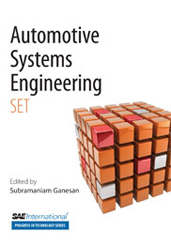Journal Article
A Study of Anisotropy and Post-Necking Local Fracture Strain of Advanced High Strength Steel with the Utilization of Digital Image Correlation
2011-04-12
2011-01-0992
The automotive industry has a strong need for lightweight materials capable of withstanding large mechanical loads. Advanced high-strength steels (AHSS), which have high tensile strength and formability, show great promise for automotive applications, yet if they are to be more widely used, it's important to understand their deformation behavior; this is particularly important for the development of forming limit diagrams (FLD) used in stamping processes. The goal of the present study was to determine the extent to which anisotropy introduced by the rolling direction affects the local fracture strain. Three grades of dual-phase AHSS and one high-strength low-alloy (HSL A) 50ksi grade steel were tested under plane strain conditions. Half of the samples were loaded along their rolling direction and the other half transverse to it. In order to achieve plane strain conditions, non-standard dogbone samples were loaded on a wide-grip MTS tensile test machine.

